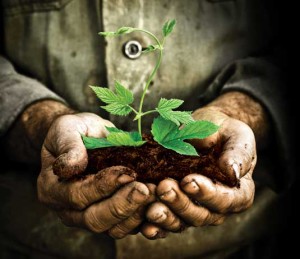Deforestation is the clearance or clearing and the removal of a forest cover or stand of trees where the land is thereafter converted for non-forest use. Examples of deforestation are mainly the removal of forestland for conversion into farms, ranches, or for urban use.
Deforestation is the cause of various activities, primarily being the cutting down of trees on large scale for urbanisation and industrialisation. The removal of trees without sufficient reforestation has resulted in damage to not only the habitat and biodiversity, but also loss in aridity.
Environmental Problems:
Atmospheric: Deforestation is said to be one of the major causes for global warming, and is often regarded as a major cause of the greenhouse effect. 20% of the world’s greenhouse emission is due to tropical deforestation. “According to the Intergovernmental Panel on Climate Change deforestation, mainly in tropical areas, could account for up to one-third of total anthropogenic carbon dioxide emissions. But recent calculations suggest that carbon dioxide emissions from deforestation and forest degradation.” In developing and developed countries the system of providing monetary compensation and benefits for use of substance that do not emit GHG (green house gases) is being adopted. This is a very successful approach towards environmental protection.
Hydrological
The water cycle is also affected by deforestation. The process functions in the following ways. The roots of trees extract water from the ground beneath and release it into the atmosphere (the process of transpiration), when trees are removed then the process of transpiration does not take place resulting in drier climatic conditions and increase in the temperatures. Deforestation reduces the amounts of water in the soil and the level of groundwater as well as the amount of atmospheric moisture. The soil which becomes dry makes water intake for plants difficult as their roots will have to move deeper into the soil in search for water.
Trees and plants in general, affect the water cycle significantly:
- Their canopies take in a part of precipitation, which is then evaporated back to the atmosphere (canopy interception).
- Their litter, stems and trunks help in slowing down surface run off.
- They are the reason for terrestrial evaporation and reduction in soil moisture which occurs due to transpiration.
Soil:
Undisturbed forests have less soil loss because the trees do not allow the sand to erode away. The rate of soil erosion increases drastically with the increase in deforestation, by increasing the amount of runoff and reducing the protection of the soil from tree litter.
Biodiversity
Deforestation on a large scale results in decline in biodiversity, and on a larger platform of global concern results in loss of biodiversity. The reduction, removal and negligence towards the forest cover and trees in general have resulted in major loss of biodiversity. Forests are supporters’ of biodiversity, as they provide habitat for wildlife; and also more importantly provide for medicinal conservation.
ECONOMIC IMPACT
Rise is deforestation has resulted in the cause for drop in economic growth, standard of living of people and reduction in global GDP by approximately 7%. The industry of forest products is one of the major establishing industries. Short-term economic gains made by deforestation for industrial and urban purposes, typically in the loss of long-term income and long-term biological productivity.
CONTROL
Following methods can be used to control deforestation and keep it under check:
- Reducing Emissions: Using fuel efficient vehicles and reducing the pollution in the environment is an important factor at all times. Many international organisations including the UN and world Bank are coming up with schemes to curtail deforestation.
- Payments for conserving forests: Providing monetary and other incentives to limit deforestation is a new idea that the UN is using to keep a check of deforestation in developing countries.
- Farming: More intensive farming techniques, such as hybrid crops and autonomous building gardens. The most promising approach, however, is the concept of perma culture, which consists of agro-forestal systems carefully designed to mimic natural forests.
- Monitoring deforestation practices: Out of the multiple, appropriate and most reliable sources for reducing and monitoring deforestation, one method is the visual interpretation of aerial photos or satellite imagery that does not require high-level training in computer image processing or extensive computational resources.
- Forest management: Using of slash and char practices above slash and burn practices is one of the main criteria of forest management. The bio char and biomass is what we should focus on.
- Reforestation: Reforestation refers simply planting of trees in large scale which is one of the major needs of today for out to try and get our forest covers back.
FOLLOW GREEN LIVING! Plant a tree and treat it like a part of your family. Try to stop people from harming our environment in several ways. This is our planet and we need it more than it needs us. Stop cutting down of trees and plant more for a greener and better future for you and for me. From the process of photosynthesis (where plants take in the carbon dioxide and provide us with oxygen) to the process of transpiration they only do good to us. Let us help embrace the god and leave the bad behind.


Leave a Reply